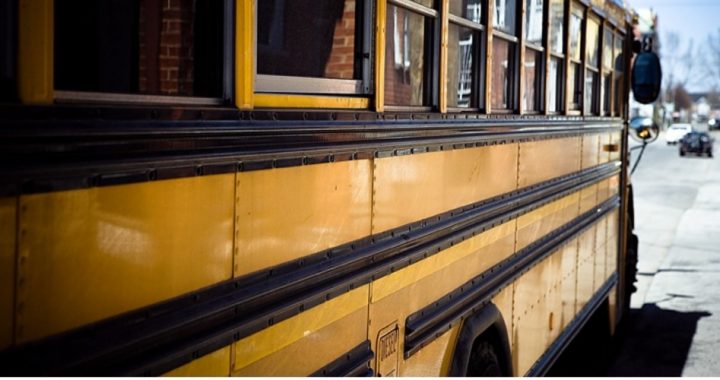
On February 5-8, 2015, the National Title 1 Association will celebrate its 50th anniversary at its national conference in Salt Lake City. It will be 50 years since President Lyndon B. Johnson signed the Elementary and Secondary Education Act (ESEA) that brought the federal government into American public schools with both feet and truckloads of cash. The purpose of Title 1 was to provide compensatory education to the disadvantaged and culturally deprived minority children in order to close the achievement gap between inner-city ghetto students and middle-class whites. The association described its purpose as,
dedicated to improving and implementing the Title I program so that more children reach their academic potential. The Association provides educational leaders at the state and local levels with the opportunity to work together to share ideas on effective and innovative programs, identify problems and solutions, and represent the needs of Title I families.
The ESEA has certainly funded Title 1 with enough money to carry out its vaunted mandate. Since 2002, the Department of Education has appropriated the following funds for Title 1:
(1) $13,500,000,000 for fiscal year 2002;
(2) $16,000,000,000 for fiscal year 2003;
(3) $18,500,000,000 for fiscal year 2004;
(4) $20,500,000,000 for fiscal year 2005;
(5) $22,750,000,000 for fiscal year 2006; and
(6) $25,000,000,000 for fiscal year 2007.
That makes a total of $116.2 billion in just six years. If we calculate what has been spent on Title 1 in the 49 years since 1965, we would be talking trillions of dollars. What have been the results of all this spending? In 2010, an attempt was made to assess the success or failure of Title 1 by Marvin Kosters and Brent Mast, authors of Closing the Education Achievement Gap: Is Title I Working? They wrote:
After more than thirty-five years of experience and numerous careful efforts to evaluate its performance, the evidence has failed to demonstrate that Title I programs have been systematically and significantly contributing to reducing disparities in achievement by improving the performance of its beneficiaries.
Why have we seen virtually no improvement in the academic achievement of these children targeted by Title 1? It might have something to do with the notion that if all of these 50,000 Title 1 directors, assistant directors, and teachers succeeded in eliminating the achievement gap that there would be no further use for Title 1 and its army of Title 1 educators.
Indeed, as early as 1969, it was already known that Title 1 was not producing the results it was supposed to produce. In that year a prestigious Committee on Reading was appointed by the National Academy of Education to examine America’s reading problem and offer recommendations for improvement. Its report, Toward a Literate Society, published in 1975, stated:
It is not cynical to suggest that the chief beneficiaries of the Elementary and Secondary Education Act (ESEA) have been members of the school systems — both professional and paraprofessional — for whom new jobs were created…. Seven years and as many billions of dollars later, the children of the poor have not been “compensated” as clearly as the employees of the school systems through this investment.
In addition, Title 1 educators have continued to use the same sight-word teaching methods and programs that created the reading problem to begin with. Thus, the Title 1 establishment is incapable of doing what it was created to do. And no one in Congress has bothered to even look into the matter. That is why we have a dysfunctional governmental education system.
The ESEA, it should be remembered, was enacted as part of Lyndon Johnson’s ambitious Great Society’s War on Poverty. Obviously it hasn’t worked, for we still have lots of poverty and functional illiteracy. Nevertheless, the federal government continues to fund all the titles of the Act: Title II funds school libraries; Title III creates supplementary education centers; Title IV supports educational research; Title V provides grants to State Departments of Education; Title VI aids handicapped children; and Title VII funds bilingual programs. In 1972, the ESEA added Titles VIII and IX. Title VIII (Impact Aid Program) pays local education agencies that can’t afford to implement federal programs. Title IX (Gender Equity) states:
No person in the United States shall, on the basis of sex, be excluded from participation in, be denied the benefits of, or be subjected to discrimination under any education program or activity receiving federal financial assistance.
Title IX has had a tremendous impact on student athletics. Schools and colleges must provide equal opportunities for females to enjoy the same sports as males. The result is that many male teams have had to give way to female teams in order to keep within budget and satisfy the law.
Every five years, the ESEA must be reauthorized by Congress, which gives the education committees the opportunity to expand the programs, usually with the persuasion and approval of the education establishment.
The latest alteration to Title 1 was made in 2001 by President George W. Bush and Senator Edward F. Kennedy of Massachusetts as the No Child Left Behind (NCLB) Act. The new authorization required increased accountability from schools, teachers, and students. Yearly tests were required in order to measure how schools were performing against the achievement standards set by Title 1. Families with children in failing schools were to be given vouchers to pay for the education of their children elsewhere.
In July 2009, the Obama administration inaugurated the Race to the Top contest as a means of getting states to adopt the new Common Core State Standards (CCSS) being advocated by Secretary of Education Arne Duncan. A fund totaling $4.35 billion was authorized by the Education Department as part of the American Recovery and Reinvestment Act of 2009. States were awarded points worth millions of dollars for adopting programs in compliance with the CCSS. Many states adopted the CCSS but are now having second thoughts because of the rise of widespread opposition by both conservatives and liberals to the standards.
The complaint of the conservatives is that adoption of the CCSS will lead to a federal curriculum. The liberal education organizations oppose it because teachers will be measured by the performance of their students. Meanwhile, publishers are producing new materials to fill the needs of a CCSS-based national curriculum. So, what comes next in our education saga? Stay tuned to hear what the new Congress will do with the Common Core.



